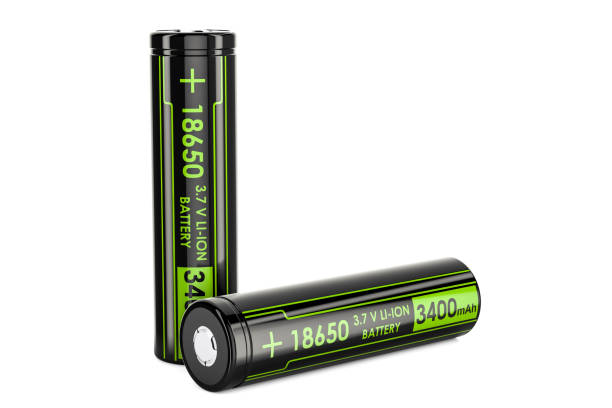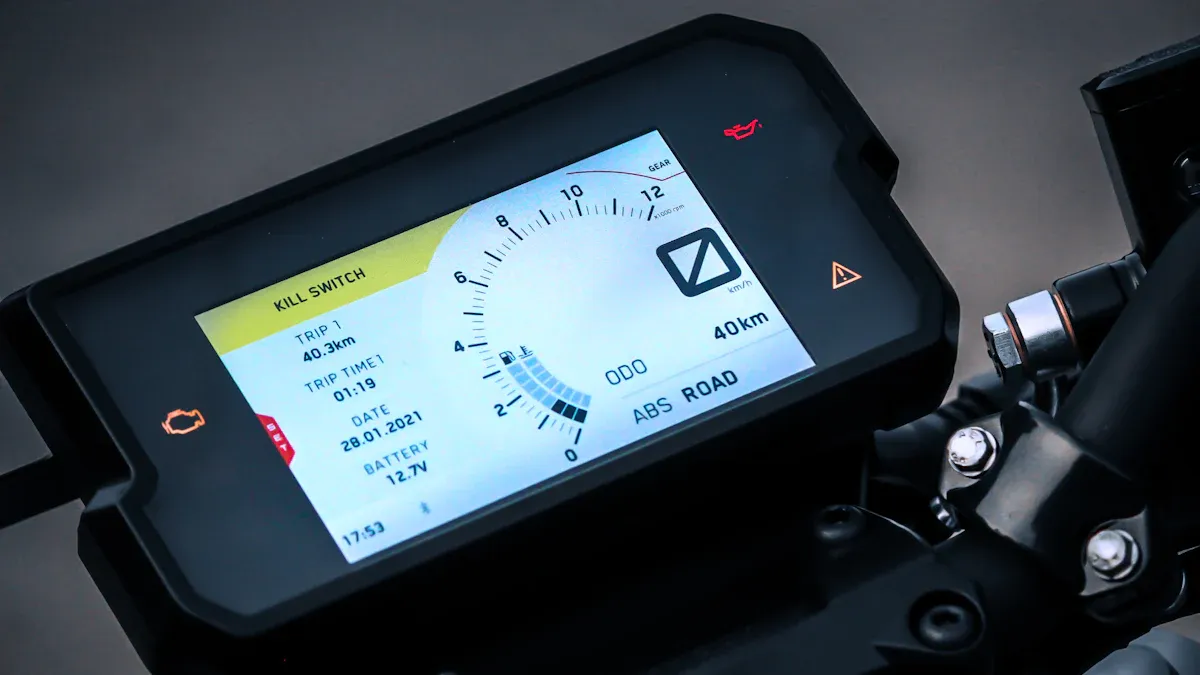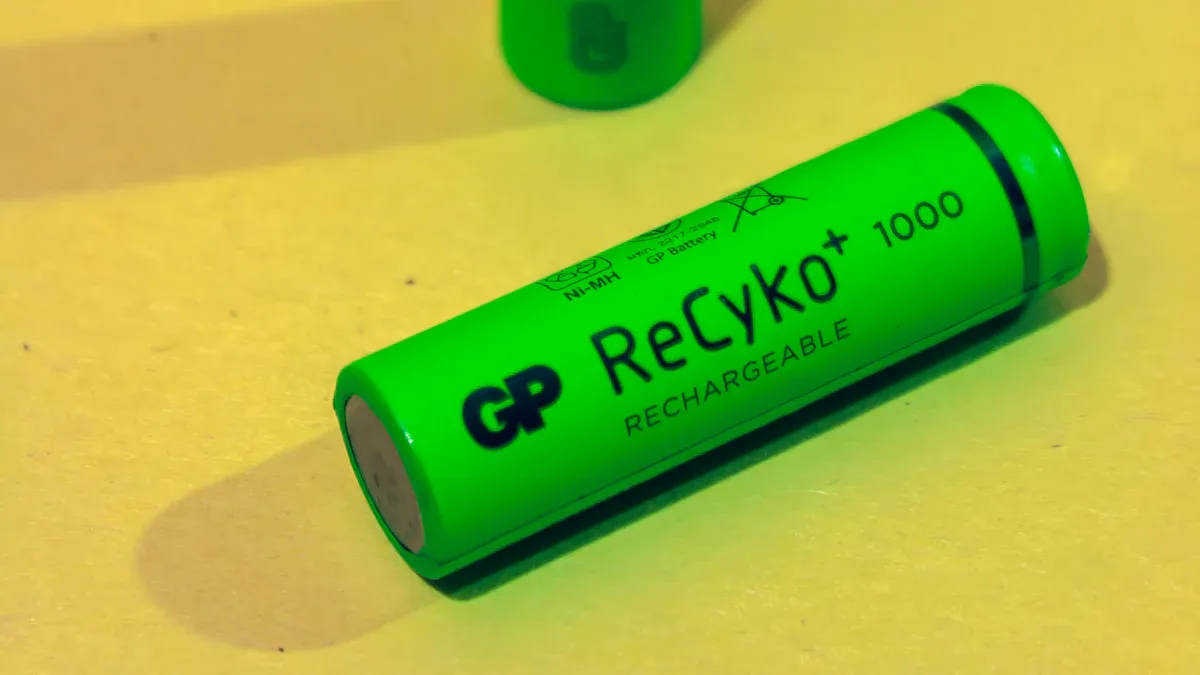MAh meaning in rechargeable battery and its significance

The term mAh, or milliampere-hour, represents a battery's capacity to store energy. It measures how much charge a battery can deliver over time. A higher mAh rating indicates a greater ability to power devices for extended periods. This makes mAh a crucial factor in determining the runtime of gadgets like smartphones, tablets, and wearables. Understanding mAh meaning helps users choose the right rechargeable battery for their specific needs. Selecting the proper mAh battery ensures optimal performance and longer usage between charges.
Key Takeaways
mAh, or milliampere-hour, shows how much energy a battery holds. A bigger mAh number means the device works longer.
Knowing mAh helps pick the right battery for your device. This makes it work better and last longer between charges.
The mAh tells how long a device runs before recharging. Devices needing more power need batteries with higher mAh.
When buying a battery, check how much power your device uses. Match the mAh to your device's needs for the best performance.
Batteries with higher mAh last longer but can be heavier. Choose a battery that balances size, weight, and cost.
What is mAh in a rechargeable battery?

Definition and significance of mAh
The term milliampere-hour (mAh) defines the amount of electrical charge a battery can store and deliver over time. It serves as a key metric for understanding battery capacity and performance. For example, a battery rated at 1,000 mAh can supply 1,000 milliamps of current for one hour. This measurement is similar to the size of a gas tank in a car, where a larger tank holds more fuel for longer trips. In rechargeable batteries, mAh plays a vital role in determining how long a device can operate before requiring a recharge. Devices with higher mAh ratings generally last longer, making this metric essential for evaluating battery life and runtime.
How mAh relates to battery capacity
Battery capacity refers to the total amount of energy a battery can store, and mAh is the unit used to measure this capacity. A higher mAh rating indicates a larger energy reserve, which translates to extended usage time for electronic devices. For instance, a mobile battery with a 3,000 mAh rating can provide 3 amps of current for one hour or 1 amp for three hours. This relationship between mAh and battery capacity helps users estimate how long their devices will function before needing a recharge. However, understanding battery capacity goes beyond mAh alone. Factors like device power consumption, usage patterns, and environmental conditions also influence battery performance.
Common mAh ratings in rechargeable batteries
Rechargeable batteries come in a wide range of mAh ratings, tailored to different applications. Small devices like fitness trackers and Bluetooth earbuds typically use batteries with capacities between 100 and 500 mAh. Smartphones often feature batteries ranging from 3,000 to 6,000 mAh, ensuring sufficient power for daily use. Larger devices, such as tablets and drones, require batteries with capacities exceeding 6,000 mAh to support their higher energy demands. Portable chargers, also known as power banks, can offer mAh ratings as high as 30,000 mAh, providing backup power for multiple devices. For high-drain applications like power tools and electric scooters, batteries with ratings above 10,000 mAh are common. These variations highlight the importance of selecting the right mAh rating based on the specific needs of the device.
How mAh affects battery life

Relationship between mAh and device runtime
The mAh of a battery directly influences how long a device can operate before needing a recharge. A higher mAh rating means the battery can store more energy, which translates to longer runtime for devices. For instance, a mobile battery with a 3,000 mAh rating can power a smartphone for several hours, depending on the device's power consumption. The relationship between mAh and runtime can be calculated using a simple formula:
Battery Life (hours) = Battery Capacity (mAh) ÷ Device Current Draw (mA)
For example, a 1,000 mAh battery powering a device that draws 100 mA will last approximately 10 hours. This formula helps users estimate how long their rechargeable batteries will last under specific conditions. Devices with higher energy demands, such as tablets or drones, require batteries with larger mAh ratings to ensure sufficient runtime.
Factors influencing battery performance beyond mAh
While mAh plays a significant role in determining battery life, other factors also affect performance. The efficiency of the device's power management system can impact how effectively the battery's capacity is utilized. Environmental conditions, such as extreme temperatures, can reduce battery efficiency. For example, cold weather can shorten the runtime of a car battery or a portable charger.
The age and health of the battery also matter. Over time, rechargeable batteries lose their ability to hold a charge, even if their original mAh rating was high. Additionally, the type of battery chemistry, such as lithium-ion or nickel-metal hydride, can influence performance. These factors highlight the importance of considering more than just mAh when evaluating battery life.
Examples of mAh impact on different devices
The impact of mAh on battery life varies across devices. Small gadgets like fitness trackers, which use batteries with capacities between 100 and 500 mAh, can last for days due to their low power consumption. Smartphones, equipped with batteries ranging from 3,000 to 6,000 mAh, typically provide a full day of usage before requiring a recharge.
Larger devices, such as tablets and drones, demand higher mAh ratings—often exceeding 6,000 mAh—to support their energy-intensive operations. Power banks, with capacities as high as 30,000 mAh, can recharge multiple devices, making them ideal for users on the go. In contrast, high-drain tools like electric scooters or power tools rely on batteries with ratings above 10,000 mAh to deliver consistent performance. These examples demonstrate how mAh ratings cater to the diverse energy needs of modern devices.
The significance of mAh rating in choosing a battery
Matching mAh to device requirements
Selecting the correct mAh rating ensures that a battery meets a device's power needs. Devices with low energy consumption, such as fitness trackers or Bluetooth earbuds, function well with batteries rated between 100 and 500 mAh. Smartphones, which demand more energy, typically require batteries ranging from 3,000 to 6,000 mAh. Larger devices like tablets or drones often need batteries exceeding 6,000 mAh to support their operations. Matching the mAh rating to the device's requirements prevents underperformance and ensures optimal battery life. Users should also consider their usage patterns. For instance, a portable charger with a higher mAh rating is ideal for frequent travelers who need to recharge multiple devices.
Trade-offs of higher mAh ratings
While a higher mAh rating shows greater battery capacity, it comes with trade-offs. Larger batteries often take longer to charge unless paired with fast-charging technology. They may also increase the device's size and weight, which could impact portability. Studies reveal that mAh ratings do not always correlate directly with total energy in watt-hours, highlighting the complexity of battery performance. Additionally, newer devices with efficient power management systems can sometimes achieve longer runtimes without requiring a higher mAh battery. Users must weigh these factors when choosing rechargeable batteries to balance performance and practicality.
Scenarios where higher mAh is advantageous
Higher mAh ratings are beneficial in scenarios requiring extended usage or high energy demands. Power banks with capacities up to 30,000 mAh are ideal for charging multiple devices during travel. Similarly, electric scooters and power tools rely on batteries exceeding 10,000 mAh to deliver consistent performance. For devices like drones or tablets, a higher mAh rating ensures longer operational periods, making them suitable for professional or recreational use. In these cases, the advantages of a higher mAh rating outweigh the potential drawbacks, providing users with the reliability they need.
How to choose the right mAh for your needs
Evaluating your device's power consumption
Understanding a device's power consumption is the first step in selecting the right mAh. Each device has a specific current draw, measured in milliamps (mA), which determines how much energy it uses. For example, a fitness tracker may consume only a few milliamps, while a tablet requires significantly more. Checking the device's specifications or user manual can provide this information. Once the current draw is known, users can estimate battery life using the formula:
Battery Life (hours) = Battery Capacity (mAh) ÷ Device Current Draw (mA)
For instance, a 2,000 mAh battery powering a device that draws 200 mA will last approximately 10 hours. This calculation helps users match the battery's charge capacity to their device's energy needs, ensuring optimal performance.
Balancing battery capacity, size, and cost
Choosing the right mAh involves balancing capacity, size, and cost. Higher mAh batteries store more energy, offering longer battery life. However, they are often larger and heavier, which may not suit portable devices like wearables. Additionally, higher-capacity batteries tend to cost more. Users should consider their priorities. For example, a portable charger with a higher mAh rating is ideal for travelers needing extended power. On the other hand, compact devices may benefit from smaller batteries with moderate capacity. Evaluating these trade-offs ensures the chosen battery aligns with both functional and practical requirements.
Tips for comparing batteries with different mAh ratings
When comparing batteries, mAh ratings provide a useful starting point. However, users should also consider other factors. Battery chemistry, such as lithium-ion or nickel-metal hydride, affects performance and longevity. Additionally, charging time varies with mAh. Higher-capacity batteries take longer to charge unless paired with fast-charging technology. Users should also assess the device's power management system, as efficient systems can extend runtime even with lower mAh batteries. Comparing these aspects alongside mAh ratings helps users make informed decisions tailored to their specific needs.
Understanding mAh is essential for selecting the right rechargeable battery. It represents the battery's capacity to store electrical charge, directly influencing how long devices can operate. Higher mAh ratings indicate longer usage times, making them critical for energy-intensive gadgets. For example, multiplying a battery's mAh rating by its voltage reveals its energy output, as seen in the iPhone 6's 1,810 mAh battery, which delivers 6.91 Watt-hours. Choosing a battery with the appropriate mAh ensures optimal performance and reliability. Users should evaluate their device's power needs to make informed decisions.
What does mAh mean in rechargeable batteries?
mAh stands for milliampere-hour. It measures a battery's capacity to store energy. A higher mAh rating indicates longer runtime for devices, making it essential for evaluating battery performance.
How does mAh affect battery life?
mAh directly impacts how long a device operates before recharging. Higher mAh batteries store more energy, providing extended usage time. However, device power consumption also influences runtime.
Can a higher mAh battery damage a device?
No, a higher mAh battery won't harm a device. It only provides more energy storage. Compatibility depends on voltage and physical size, not mAh.
How do I choose the right mAh for my device?
Evaluate the device's power consumption and usage patterns. Match the mAh rating to the energy needs. For portable devices, balance capacity with size and weight.
Are higher mAh batteries always better?
Higher mAh batteries offer longer runtime but may increase size, weight, and charging time. Consider device requirements and portability when choosing.
See Also
Explore LPQ252-CEF: Your Solution for Power Efficiency
M30280FAHP: A Dependable Option for Medical Integrated Circuits
ARTESYN NPT42-M: Driving Automation in Industrial Settings
Uncover Key Features of MC9S12XEQ512CAL Today
Reasons to Select Coilcraft XPL2010 for VRM/VRD Applications
CALL US DIRECTLY
(+86)755-82724686
RM2508,BlockA,JiaheHuaqiangBuilding,ShenNanMiddleRd,Futian District,Shenzhen,518031,CN
www.keepboomingtech.com sales@keepboomingtech.com
